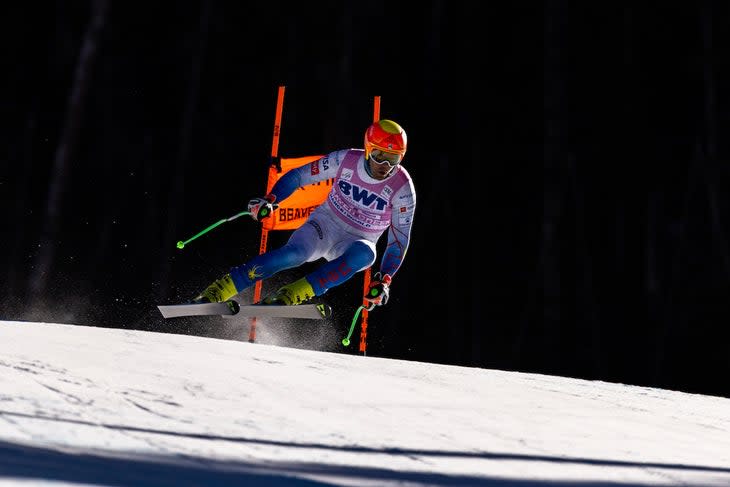New Race Will Kick Off World Cup Speed Circuit Earlier Than Ever—If the Glacier Holds
This article originally appeared on Ski Mag
Since the start of the FIS Alpine World Cup in 1967, speed skiers have had to wait until at least late November for the first downhill race. Until this year.
On October 29 and 30--only a week after the traditional World Cup season opener, the giant slalom on the Rettenbach glacier in Solden, Austria--the world's fastest ski racers will get a chance to slide into a start house. That is, if the weather and glacier surface cooperate.
Read more: U.S. to. host two additional World Cup races in 2023
"La Gran Becca" (Italian for "great peak") is the newest addition to the World Cup speed circuit and will make its debut this fall. Designed by 2010 Olympic downhill champion Didier Defago, the course starts atop Switzerland’s Zermatt overlooking the Matterhorn and ends in Cervinia, Italy. The new course boasts several noteworthy features, but the fact that it has racers starting in one country and finishing in another is perhaps the most unique. (The border-free Schengen provisions allow skiers to leave their passports at the hotel.)
The course also features the highest start on the World Cup tour (3,720 meters or 12,205 feet) and, at 3.7 kilometers (2.3 miles), is one of the longest courses on tour.
Watch: Matterhorn Cervino Downhill Course
"It’s going to be interesting," said World Cup downhill veteran Steven Nyman, citing the course's elevation, length, and the conditions of the course during that time of year. "It should be a fairly demanding race right off the bat."

Despite the challenges--or perhaps because of them--Nyman is looking forward to the speed opener. He described the course as a glider's track, at least, on the Swiss end. After it drops into Italy, the curves and steeps will likely make it more technical.
"I’ve never skied that part of the course," he said. "I’ve only skied the upper part. I don’t know if anybody’s really skied that lower part. But I think it could suit my style."
Related: Steven Nyman is to skiing as Tom Brady is to the NFL--he’s still taking hits at 40
The race was first proposed in November 2019 as a way to highlight completion of the 3S lift, a cross-border cable car that connects Testa Grigia in Cervinia with Klein Matterhorn on the Zermatt side (the highest alpine crossing in the world). The Covid-19 pandemic delayed the lift's opening until 2023 and forced organizers to lower La Gran Becca's start. After the 3S lift opens, La Gran Becca's start will move up to 3,800 meters (12,467 feet).
The men will race two World Cup downhills on October 29 and 30; the women get their chance a week later. For parity, Zermatt will host the men's teams; Cervinia, the women. Speed skiers then head to North America for the usual Lake Louise speed races in late November (women) and Beaver Creek in early December (men).
As for the weather, FIS is optimistic that the Matterhorn Cervino speed opener will kick off the season.
"We need one meter of natural snow by the middle of October," said FIS alpine women's media coordinator Giulia Candiago via email. "In the past, this would usually happen, and we are very confident that this will happen this year too."
Related: Zermatt, World’s most climate-resilient glacier shuts down summer ops
Two-thirds of the course is on the glacier, and should natural snow fail to fall, a modern snowmaking system can blanket the lower part of the course with 50 centimeters (20 inches) of snow in three cold nights.
"But of course," Candiago added, "nature has the last word."
For exclusive access to all of our fitness, gear, adventure, and travel stories, plus discounts on trips, events, and gear, sign up for Outside+ today.

